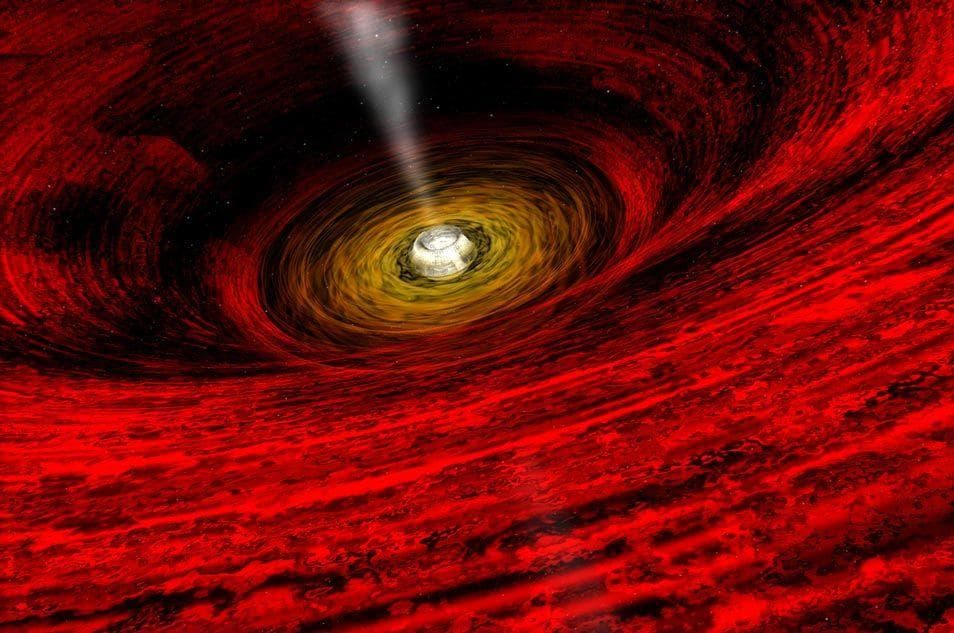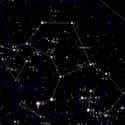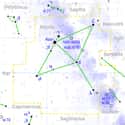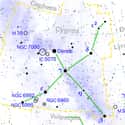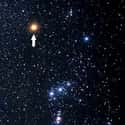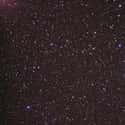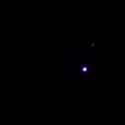-
(#5) Alpha Centauri
Magnitude: 1.33
You see Alpha Centauri as one star, but it's actually a binary system comprised of A and B. There's even a third star associated with the system called Proxima which is the closest star to our sun. If you have a telescope, you can actually see both stars, and they say that ancient Greek and Arab armies used to use its duality as an eye test for their men. This group of three stars is in the constellation Centaurus, and can only really be seen by folks in the Southern Hemisphere. -
(#13) Altair
Magnitude: 0.77
Another of the three points in the Summer Triangle (along with Vega and Deneb), Altair is an A-Type Main Sequence star with about 1.8 times the mass of our sun and 11 times the luminosity. It resides in the constellation Aquila and it is one of the first and only stars for which a direct image has been retained (in 2006). -
(#18) Deneb
Magnitude: 1.25
Deneb is the third member of the Summer Triangle. In the constellation Cygnus Deneb is a blue-white supergiant that is nearly 60,000 times more luminous than our sun. It is also the furthest 1st mag star from earth. Based on the little we know of Deneb, it appears to be about 220 times larger than our sun... and because of its high mass and temperature, it will probably have a short lifespan. -
(#8) Betelgeuse
Magnitude: 0.42
Another star in Orion (he's got a lot of bright stars in and around him), Betelguese is a red supergiant. If you were to place it in the center of our solar system, it would extend past Jupiter! We don't know its mass for sure, because it's really far away... 640 light years. And, being a red supergiant, it's pretty much done for. Betelguese isn't expected to live past the next million years. -
(#3) Canopus
Magnitude: -0.72
This sparkler is in Carina. It is the brightest star in the Southern Hemisphere. Canopus is a "supergiant" spectral type F star that is 15,000 times more luminous than our sun and 65 times bigger. If you put it in the center of our solar system, it would extend three quarters of the way to Mercury. -
(#20) Regulus
Magnitude: 1.35
Regulus is another star that you've probably seen more than you realize. It's pretty close to the Big Dipper, which tends to spend a lot of time in the sky, so if you just look right below it and see the backwards question mark, that's Leo. And in Leo, is Regulus. Regulus is a blue-white Main Sequence star that is 3.5 times the sun's mass. A young star, its only a few hundred million years old.
New Random Displays Display All By Ranking
About This Tool
Without other disturbances such as lights and pollution, people can see the countless stars and even the Milky Way on a clear sky. There are hundreds of billions of stars, and nebulae in the Milky Way and space, but not all the stars can be seen from the earth. Many people think that the sun is the brightest in space, that is a misunderstanding.
Mars is the only planet visible after night falls, Sirius is one of the brightest stars, you can easily find it in the winter sky of the northern hemisphere because it is relatively close to the earth. The random tool lists 20 brightest stars in the sky you should know.
Our data comes from Ranker, If you want to participate in the ranking of items displayed on this page, please click here.

